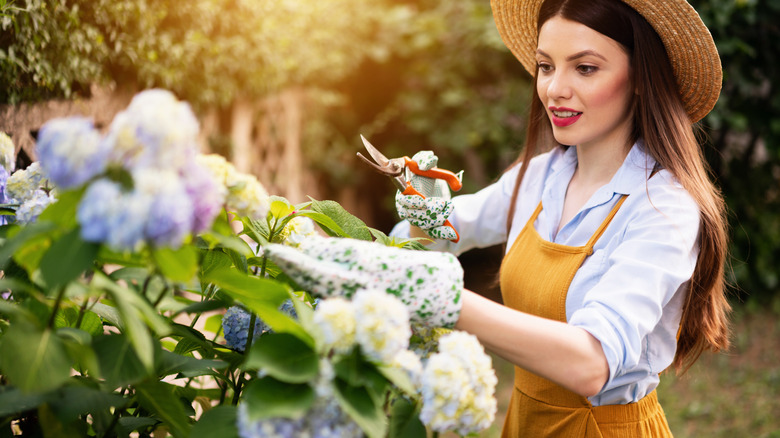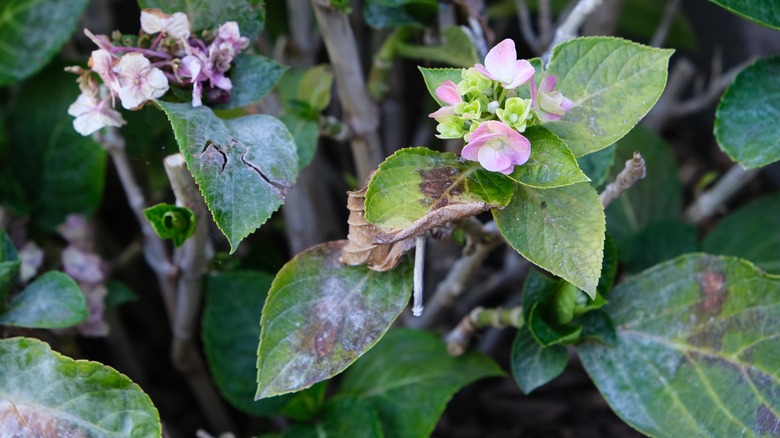Why Your Hydrangea Leaves Are Turning Yellow
Symbolic of various heartfelt emotions, including love and forgiveness, hydrangeas have earned a special spot beyond aesthetics amongst seasoned green thumbs and amateur gardeners. While these shrubby plants, adorned with delicate pink, blue, or white blooms, are guaranteed to dazzle anyone growing and caring for them, the sight of their leaves turning yellow can swiftly diminish the joy they bring. Usually, lackluster foliage can be blamed on the unavailability of optimal growth conditions such as unsuitable watering practices, inadequate sun exposure, and extreme temperature changes.
However, nutrient deficiencies and poor pest and disease control are more pressing reasons for hydrangea discoloring and wilting away. Owing to their high affinity for acidic soils ranging between 5 and 6.2 pH levels, these garden stars can't perform well in alkaline conditions as it inhibits nutrient intake. They are also susceptible to attacks from pests, including aphids and spider mites, and infections, such as mosaic virus and tomato ringspot virus, that necessitate planting disease-resistant varieties.
Yellowing due to nutrient deficiencies
Hydrangea's ability to change its colors based on its soil's pH levels often brings out the creative side of every gardener seeking to grow their blooms. However, such experimentation could lead to pH levels exceeding 6.4 and can cause the new growth to develop an iron deficiency or iron chlorosis. Higher alkalinity levels prevent the plant from absorbing essential micronutrients such as iron and manganese, leading to yellowing leaves with green veins still intact. Extreme deficiencies may result in the plant turning white and wilting away.
Further, if the pale leaves develop red margins and curl up, it may indicate insufficient magnesium levels. Hydrangea foliage can also suffer discoloration and stunted growth due to nitrogen deficiency. However, unlike iron shortages that impact new vegetation, a lack of nitrogen is more pronounced on mature leaves. Amending the soil with compost, sulfur, or manure and applying adequate fertilizer should help rectify nutrient deficiencies.
Pests and diseases causing pale foliage
Yellowed hydrangea leaves are also a consequence of viral and fungal diseases. Waterlogged and poorly-drained soils are the ideal home for root rot, a fungal disease that triggers leaf chlorosis and causes the eventual demise of the plant. During spring and fall, your shrub's leaves may also develop yellow mottling, later deforming completely, signaling a chlorotic mottle virus infection. While defoliating the affected leaves and limiting water to about 1 inch per week should help restore your fungal-infected hydrangea, virus-hit plants cannot usually be cured.
Your lush green foliage may also develop yellow spots when infested with spider mites, which are a common occurrence during hot weather experienced between June and August. The web-ridden leaves may ultimately turn grayish bronze and droop prematurely. A similar phenomenon may be noticed in aphid invasions, where small insects feed on the hydrangea's sap. These pest attacks can be controlled through neem oil or insecticide applications. Finally, you must also be wary of using non-selective herbicides, which cause strap-like, stunted yellow leaves to grow in the next season.

